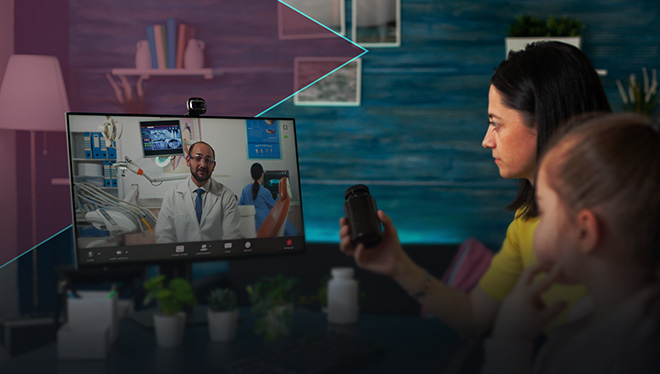

SIGNALS+ 在线快讯订阅
持续关注Signals+,了解有关连接、数字健康、电气化和智能工业的最新见解、信息和想法并加以利用。
ICU中的智能医院技术:打造更人性化的医疗体验
重症监护室(ICU)收治的都是病情最为危重的患者,需要最精心的护理照料。因此,发生在ICU中的任何差错都可能造成严重后果。然而,尽管失误成本极高,但由于长期存在人工操作流程繁琐、人手不足以及医护人员工作负荷过重等问题,ICU中还是错误频出。智能医院技术有望大幅改变ICU的现状,帮助减少可避免的失误,改善患者的护理体验。
ADI公司正竭力推广先进智能医院技术在ICU的应用。无论是优化排班以改善工作流程,还是实现直接患者护理的自动化,数字技术都已展现出巨大潜力,能够提高效率、减少差错,并改善患者预后。


“对整个半导体产业而言,医疗健康领域的许多方面仍然是尚待开发的蓝海。从诊断的实现到诊断结果的传输和解读,医疗领域迫切需要更广泛的数字化技术。在这个时期,医疗健康领域可能出现爆炸性增长。”Vince Roche
ADI公司CEO
ICU差错频发
患者治疗结果不良可能源于一些看似很小的失误:误诊、诊疗过程中遗漏某个步骤、用药错误、未能及时开始或停止治疗,以及简单的沟通不畅等1。一项研究1表明,即使在高收入国家和地区,也有十分之一的患者在治疗期间出现不良反应。该研究还发现,医院15%的开支是由于医疗差错或患者在住院期间发生交叉感染造成的1。
幸运的是,智能医院技术能够帮助辛勤工作的医生和护士更轻松地避免此类差错。将一些任务完全或部分实现数字化,能够让护士将更多时间直接用来照护患者。
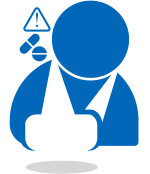
即使在高收入国家和地区,也有十分之一的患者在治疗期间出现不良反应。1

用药错误占 ICU严重医疗差错的78%。1
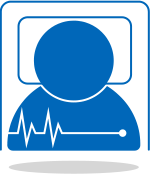
7% 的ICU死亡病例原本是 可以避免的。2
ICU差错的根源
在医疗领域,治愈患者不仅要求控制疾病的表面症状,更要从根源上解决病因。同样,还要解决出现在ICU中的各种差错,也必须首先深入了解ICU中的差错发生在哪里,以及发生的原因。唯有如此,数字化转型才能发挥最大的效用,减少甚至杜绝差错。
过时的工作流程
许多医院仍在使用容易出错并影响效率的人工操作流程。医护人员常常需要在每个班次结束时,花费一到两个小时整理交接班所需的文件3。即使是已经采用了电子病历(EHR)等信息技术的医疗机构,也常常因为系统之间无法有效兼容和共享信息而面临各种挑战。
人员配置挑战
工作负荷过重、医护人员短缺等问题日益严峻以及工作中频繁的干扰,都为医疗差错的发生埋下了隐患。护士的工作常常被打断,有时频率高达每小时10次,而且往往是因为一些与临床无关的小事,比如病人想要电视遥控器3。员工倦怠导致大约三分之一的护士在工作的前三年内辞职,尤其是在ICU中工作的护士,这并不令人意外3。世界卫生组织(WHO)预测,到2030年,全球将面临1000万医护人员的缺口4。
护理复杂性增加
ICU患者病情通常较为复杂,可能正在从多器官功能衰竭等严重疾病或损伤中康复。有些患者还可能伴有慢性疾病等并发症,或因年老体衰而身体机能下降。即使是普通患者,现在产生的数据量也呈指数级增长,远超以往5。智能医院技术能够帮助医护人员适时地收集、管理、分析患者数据,以及将其共享给相关人员。

智能医院技术在ICU中的应用
设想一下,无需医护人员干预,智能医院技术就能够自动执行一些直接患者护理工作,例如,根据实时采集的数据进行用药调整。事实上,闭环治疗中已融合自动化和自适应机械通气技术,并且已在临床中有所应用6。
借助先进的边缘检测和智能技术,医疗技术能够在争分夺秒的环境中,辅助医护人员做出更明智、更快速的决策以及更精准的诊断。以下列举了一些有助于推动变革的智能医院技术:
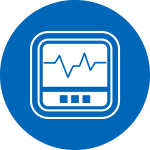
高级检测
实时全面地了解患者病情,有助于及早发现关键变化,同时无创监测也能减轻患者在此过程中的不适。示例包括光学、贴片式和非接触式VSM;用于分析活动能力和睡眠状况的微型MEMS运动传感器;以及用于帮助识别压疮(ICU常见并发症)的电子皮肤评估工具7。

人工智能(AI)
人工智能与先进的生物传感技术及其产生的数据紧密结合,如同一个时刻保持警惕的伙伴,通过持续不断的数据分析,增强早期预警系统的效能。人工智能擅长模式识别,这使其成为智能临床决策和诊断支持的强大工具,此外还能识别和预警新出现的公共卫生趋势。

精密运动系统
精密运动系统为优化直接护理流程和实现自动化带来了可能。自动处理重复性工作,可以让医疗专业人员专注于提供高质量的患者护理。
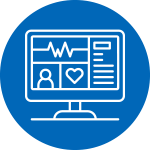
互联平台/生态系统解决方案
在不同设备和地点之间安全、实时地传输患者的生命体征数据,有助于医护人员及时获得所需信息,从而在合适的时机提供恰当的治疗和护理。为了提供更出色的医疗服务,医院需要尽可能地改善各设备之间的集成和互通性,理想情况下,还要实现整个医疗服务网络内的互联互通。

安全认证器
网络攻击不仅可能导致患者数据泄露,还会影响呼吸机、药物泵等直接用于患者治疗的设备,严重威胁患者的生命安全8。因此,我们需要在系统和网络层面,以及在网络边缘,建立起强大的网络安全防护体系。此外,射频识别(RFID)标签和扫描仪等解决方案也能帮助识别假药,保障用药安全9。
ICU数字化:赋能医护人员,实现人性化护理

通过将ICU的某些环节数字化,我们不仅可以提高医疗效率,还能使医疗服务更加人性化。试想一下,医生能在患者表现出明显症状之前就加以干预,及时阻止病情恶化。再试想一下,有了预测性护理,慢性病的管理成本和对患者生活的影响都会大大降低。科技还能帮助医院有效延长医患交流的时间,并尽可能减少医疗差错,从而改善患者的治疗效果。
ADI公司很荣幸能够通过智能医院技术为医生和护士提供帮助。我们正与客户共同开发突破性的医疗技术,包括生命体征监测(VSM)、生物传感器、AI诊断、无创光学技术和智能病床等,以期大幅改善ICU现状,为医疗健康事业开创更智能、更健康、更高效的未来。
参考资料
1 “Transforming acute care through digitization”。飞利浦,2019年。
2Kristin E. Schwab等人。“Rapid Mortality Review in the Intensive Care Unit: An In-Person, Multidisciplinary Improvement Initiative”。美国国家医学图书馆,2021年。
3 “Honeywell’s Robert Robinson on healthcare digitalisation”。Healthcare Digital Magazine,2023年。
4 “Health workforce”。世界卫生组织,2023年10月访问。
5“Health Data Volumes Skyrocket, Legacy Data Archives On the Rise”。Harmony Healthcare IT。
6 “The dawn of physiological closed-loop ventilation—a review”。BMC,2020年3月29日。
7“Effectiveness of interventions to prevent pressure injury in adults admitted to intensive care settings: A systematic review and meta-analysis of randomised controlled trials”。美国国立卫生研究院,2021年。
8“The elephant in the room: cybersecurity in healthcare”。美国国立卫生研究院,2023年。
9 “Critical Success Factors and Traceability Technologies for Establishing a Safe Pharmaceutical Supply Chain”。美国国立卫生研究院,2021年。




 关闭详情
关闭详情

